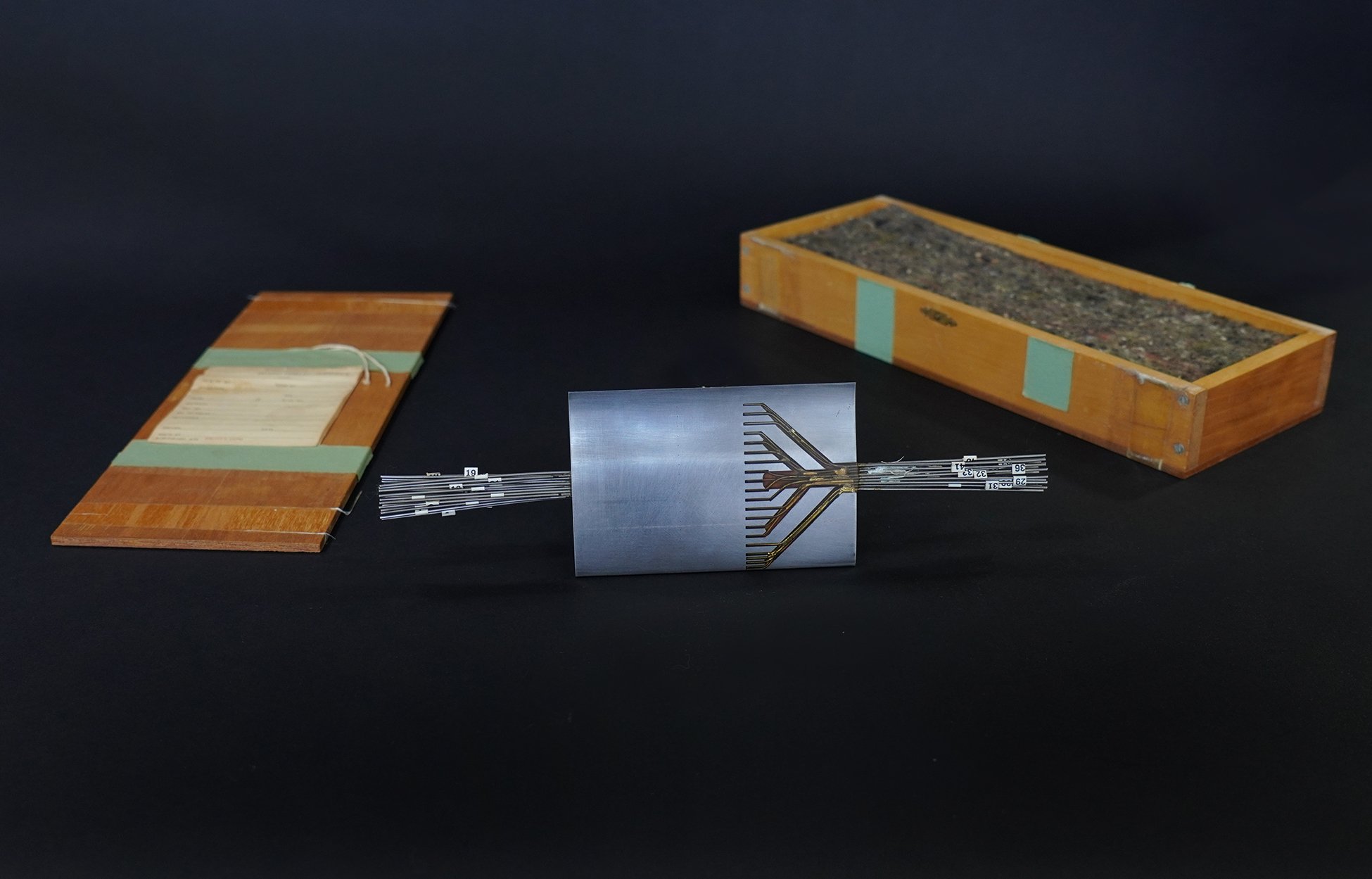NASA LANGLEY C.1971 Wind Tunnel Airfoil Model 010-64 Wing-Rotor Helicopter
NASA LANGLEY C.1971 Wind Tunnel Airfoil Model 010-64 Wing-Rotor Helicopter
This NASA 010-64 Helicopter rotorcraft airfoil model was manufactured and tested in the 1970's at the 6x19" Transonic Tunnel located at the NASA Langley Research Facility in Virginia. It is beautifully crafted and in excellent condition. Included is wooden storage case with a bottom level where as a spare airfoil can be stored. It has 42 Pressure Taps, 21 on top and 21 on the bottom for measuring laminar airflow. Overall length is 14" including tubing. Comes in original box with NASA Langley delivery ticket—writing on the bottom delivery ticket is faint but reads: ‘ To building 554 Room # 110 Attn Bob McGhee Material : Airfoil Model
HISTORIC INFORMATION: In the late 1960s, emerging interest in high-speed airfoils for rotor sections for V/STOL aircraft and similar airfoils for civilian aircraft resulted in studies to convert the existing 22-Inch High-Speed Tunnel (with its three-dimensional test section) to a 6 X 19-Inch Two-Dimensional Tunnel using most of the existing hardware. The resulting tunnel would be used as a workhorse for the new efforts on advanced airfoils. The Langley 6 X 19-Inch Transonic Tunnel began operations in 1971 as a two-dimensional, slotted-wall, vertical wind tunnel powered by a direct blowdown from a tank farm of dry, compressed air. The tunnel was capable of operations at Mach numbers from 0.5 to about 1.2, with extensive instrumentation in the form of surface oil flow photographs, schlieren flow photographs, integrated forces and moments, and surface-pressure distributions. In addition to fundamental airfoil experiments, the facility was used to supply calibration data for the development of computer methods to analyze the effects of slotted walls on aerodynamic data. It continued in research operations until the late 1990s.









